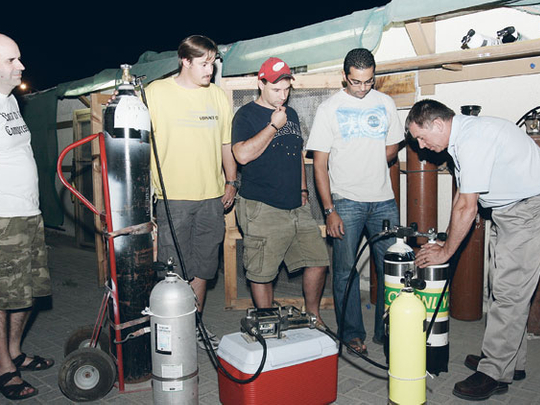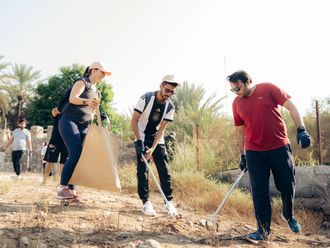
Dubai: A Dubai-based shipwreck hunter is embarking on a new expedition in search of a sunken Italian wartime submarine.
William Leeman, a member of the Desert Sports Diving Club in Al Quoz, and his team of divers will begin their five-day search for the Galvani in international waters off the coast of Iran on May 28.
The Galvani was sunk by British sloop HMS Falmouth near the Straits of Hormuz on June 26, 1940.
Leeman, who was the first person to find the Nazi submarine U-533 off the coast of Fujairah several years ago, is heading the first expedition to search for the Galvani.
Very little information is available about the whereabouts of the lost Italian sub, which makes her physical discovery even more precious to historians.
Precise coordinates
"We have coordinates for the Galvani from the Hydrographic Office in London that show ‘position precise'. We have already been on a scouting trip prior to the exhibition because it is vital we locate the Galvani's exact position; every metre counts when you are underwater," Leeman said.
"The Galvani is a historic vessel and it will be quite a challenge to find it. If we succeed, it would equal any of my diving achievements including the discovery of the U-533. The big problem we face on this expedition is the sub's location just off the coast of Iran," he said.
"We will be diving in a shipping channel between Iran and Oman. I would not say it is inevitable that we will be arrested by the Iranian authorities but it is a possibility," Leeman added.
"I have my passport and ID on a laminated sheet in case we encounter any difficulties. We have never had a boat driver brave enough to take us before."
However, the Galvani's location is not the only obstacle facing the expedition.
The deep-sea mission is dangerous in its own right and every team member has been trained to be totally independent underwater.
Technical diving is generally considered diving which is deeper than 40 metres. Leeman and his team will be plummeting to depths of a 100 metres over a period of approximately two hours.
"We always dive in pairs, nobody goes solo. However, circumstances can change underwater and people can become separated from each other," leeman said.
"You cannot go looking for people at such depths if you lose them; there is no way back at that point and you just have to hope you meet up with everybody back at the top," he added.
"The other big risk with 100-metre dives is oxygen toxicity on decompression, which could lead to convulsions underwater. The team have been trained to mix different gases on their way back to the surface."
The diving expedition, which will cost between Dh30,000 and Dh40,000, begins from Dibba on the UAE's east coast.
The team also plan to shoot video footage of the Galvani if they are successful in discovering its whereabouts.
Hani Halfawi, one of the team's technical divers, said: "If we find the Galvani, it will be the highlight of my diving career. It would be by far the best thing we have ever found."
"To be the first person to put your hand on a wreckage such as the Galvani or the U-533 is pretty special. It is our equivalent of climbing Mount Everest," he said.
"It is a very exclusive group that gets the opportunity to do something like this. It is always a bit of a race between everyone to be the first person to touch the vessel so we all tend to do it at the same time!"










